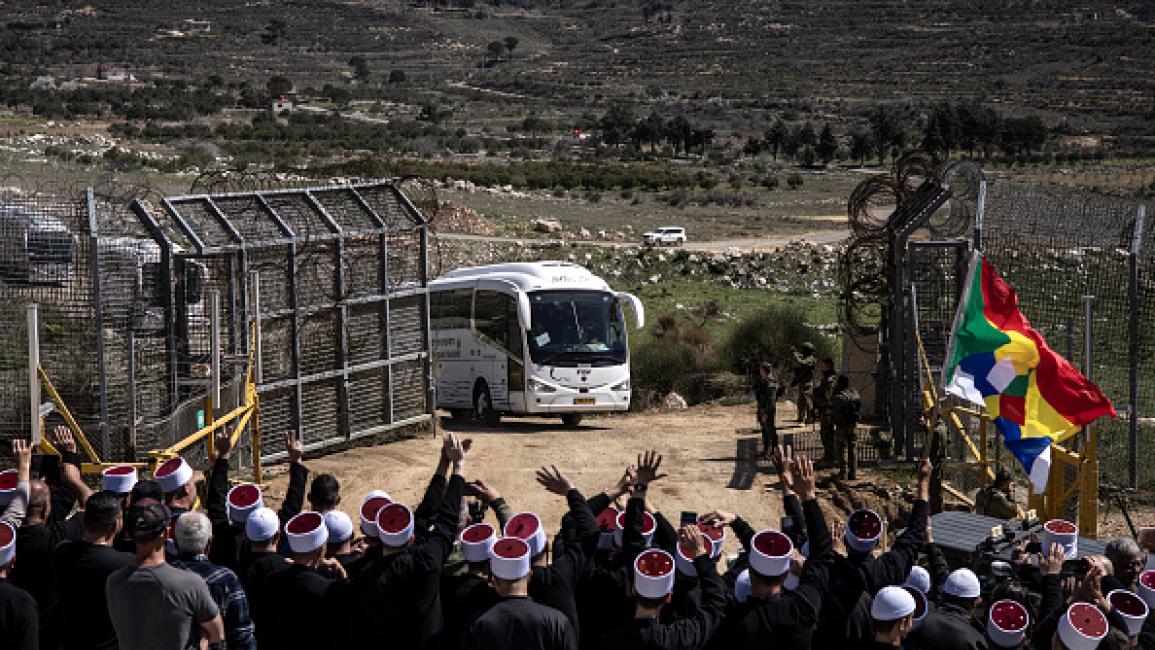A large religious delegation from Syria’s Druze community is preparing to travel on Friday to the Shrine of Prophet Shu‘ayb in Israel’s Galilee region, where they will participate in the annual commemoration of the sacred site, held each year on April 25.
According to sources cited by Suwayda 24, the delegation includes approximately 680 clerics—around 150 from Suwayda Governorate and hundreds more from Mount Hermon and the Damascus countryside—making it the largest such Syrian participation in years.
Religious and Political Coordination on Both Sides
The visit has been arranged through direct coordination between Druze religious authorities in Syria and their counterparts in Israel. The Israeli side reportedly submitted the visitors’ names to state authorities, who granted formal approval for the delegation to enter and attend the event.
Syrian government sources confirmed that religious institutions had notified authorities of their intention to organize the visit roughly a week in advance. Although Damascus did not issue an official statement of approval or rejection, observers have interpreted the government’s silence as tacit consent.
Reviving a Spiritual Tradition Older Than 1948
The annual pilgrimage to the Shrine of Prophet Shu‘ayb—honoured by Druze communities in Syria, Lebanon, Jordan, and Israel—dates back to 1884. The ritual, held between April 22 and 25, involves religious and cultural ceremonies passed down through generations. However, the political fallout of the 1948 Nakba barred Druze from Syria and Lebanon from participating for decades.
The commemoration is widely regarded as a unifying spiritual occasion, where Druze clerics and adherents gather for collective prayer and reflection, symbolising the enduring bonds of shared faith and identity across modern state borders.
Israeli media reported that the Syrian delegation was granted official permission to reside in the area for the duration of the religious events, after which they will return to Syria.
Renewed Pilgrimage Amid a Shifting Political Landscape
The upcoming visit follows a smaller religious mission last month known as the “Hadar Visit,” which involved approximately 60 clerics from the town of Hadar in Mount Hermon. Together, these visits reflect a tentative but notable trend toward re-establishing spiritual ties between Druze in Syria and their co-religionists in Israeli-controlled territories—amid a broader, albeit limited, easing of restrictions on religious and social exchanges.
Nevertheless, the move remains politically sensitive. The Syrian government’s silence, contrasted with Israel’s public endorsement, has sparked debate about the broader implications of such visits. Analysts are divided over whether this signals a new phase of unofficial engagement between Syrian religious minorities and Palestinian religious spaces within Israel’s 1948 borders—or whether it simply reflects a pragmatic effort to maintain ancestral spiritual practices in a fractured regional landscape.
This article was translated and edited by The Syrian Observer. The Syrian Observer has not verified the content of this story. Responsibility for the information and views set out in this article lies entirely with the author.


